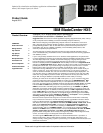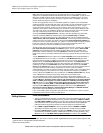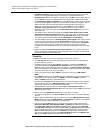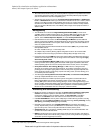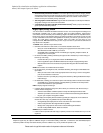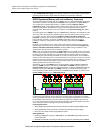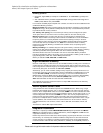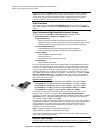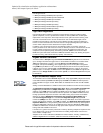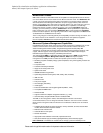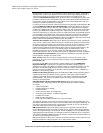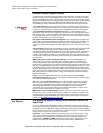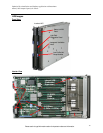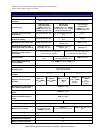
Optimized for virtualization and database applications with maximum
memory and compute capacity in a blade
Please see the Legal Information section for important notices and information.
8.
Reliability guidelines:
• Using fewer, larger DIMMs (for example 8 x 4 GB DIMMs vs. 16 x 2GB DIMMs is generally more
reliable
• Xeon 7500 Series memory controllers support IBM Chipkill memory protection technology with x4
DIMMs (x4 data width of rank) and x8 DIMMs
For increased availability beyond Chipkill error correction, the eX5 servers offer additional levels
of IBM Active Memory protection:
Memory ProteXion
technology provides multichip error protection and works in conjunction with
Chipkill technology—which provides multibit protection per chip—and standard ECC protection,
to provide multi-level memory correction.
With memory rank sparing, two unused ranks per memory card are configured as spares.
These spare ranks are used in the event of a memory failure on the same memory card.
Memory mirroring works much like disk mirroring. The total memory is divided into two
channels. Data is written concurrently to both channels. If a DIMM fails in one of the DIMMs in
the primary channel, it is instantly disabled and the mirrored (backup) memory in the other
channel becomes active (primary) until the failing DIMM is replaced. With mirroring enabled,
one-half of total memory is available for use. (Note: Due to the double writes to memory,
performance is affected.) Mirroring is handled at the hardware level; no operating system
support is required.
Memory scrubbing is an automatic daily test of all system memory. It detects and reports
memory errors that might be developing before they cause a server outage. Memory scrubbing
and Memory ProteXion work together. When a bit error is detected, memory scrubbing
determines whether the error is recoverable. If the error is recoverable Memory ProteXion
technology will write the data to new location; if it is not recoverable, scrubbing sends an alert to
light path diagnostics, which then notifies IBM Systems Director.
Memory is available in 2GB, 4GB, 8GB, or 16GB DIMMs.
High-Performance Scalability
Because of eX5 design, an HX5 server has the incredible flexibility of scaling from 2 sockets to 4
sockets with ease, doubling the memory and storage capacity and I/O slots in the process. A 2-
node configuration is achieved simply by connecting 2 30mm blades together via the Quick Path
Interconnect (QPI) ports, for 4 sockets and 32 DIMMs (256GB).
Alternatively, you can scale via MAX5, adding memory capacity to increase performance in an
I/O-intensive enironment. This configuration connects 1 HX5 blade to 1 MAX5 blade, for a total
of up to 40 DIMMs (320GB), If even that’s not enough, you can connect 2 HX5 blades to 2
MAX5 blades, and the two MAX5 units are cabled together using our exclusive EXA scalability
kit. The result is a powerhouse 4-socket, 80 DIMM (640GB) blade server in only 120mm.
Note: Selected models of HX5 come standard with a MAX5 blade.
This scalability and memory expansion feature is a unique IBM enhancement, not offered by
other x86 server architectures.
XceL4v Dynamic Server Cache
A key performance feature of MAX5 expansion is the XceL4v L4 cache. When using a single
HX5 blade with a MAX5 expansion unit, no virtual cache needs to be taken from main memory.
However, when multiple MAX5 nodes are connected, 256MB of L4 cache is allocated from main
memory used for interprocessor communications between chassis, to keep data in synch. In a 2-
chassis configuration, this amounts to 512MB of L4 cache. This not only compensates for any
performance hit that might otherwise result from sending data across the distances between
processors in multiple chassis, it actually results in a performance improvement versus a single
chassis. (IBM X3, eX4 and eX5 servers have achieved well over 100 #1 results on industry-
standard benchmarks, such as TPC-C, TPC-E, TPC-H, SAP SD, vConsolidate, Vmark, and
more.)
This feature is another IBM-unique enhancement.
Integrated Virtualization
HX5 offers a separately orderable IBM 2GB USB Flash Drive option preloaded with VMware
ESXi 4.0 (an embedded version of VMware ESX Server). Microsoft Hyper-V and Xen are also
supported, installed by the user on an SSD.
ESXi is fully contained on the flash drive, without requiring any disk space. Because it runs from
flash memory, it’s extremely fast and ideal for diskless configurations. It also offers enhanced
security, because it runs without an operating system-based console and is updated/patched
much like firmware. ESXi includes all the performance, scalability and compatibility features of



